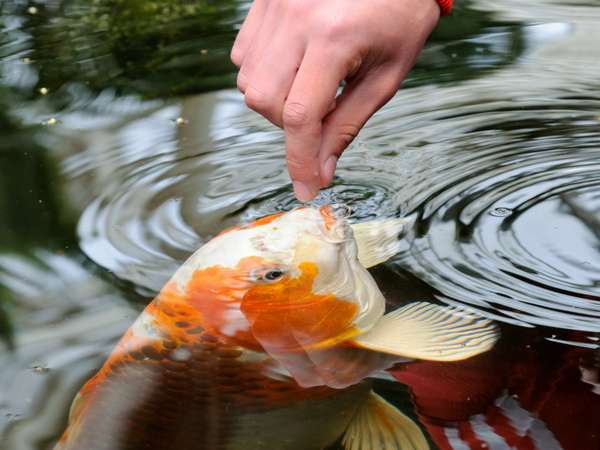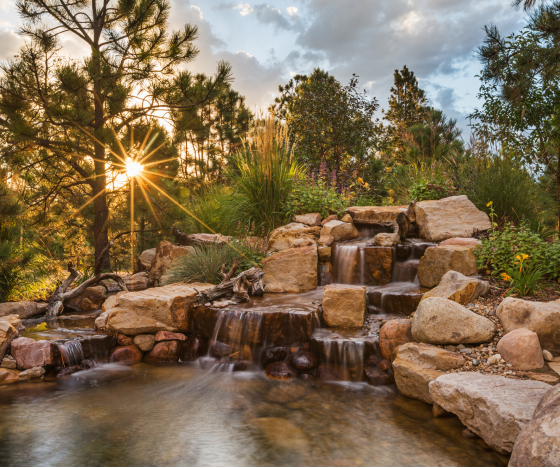People Near You Are Trying To Take Great Care Of Their Koi Fish By Learning About Their Diets
Thank you for caring enough about your fish (or soon-to-be fish) to look up how to best care for their dietary needs.
In this post, you’ll discover what koi fish can and can’t eat. You can also find out how to best feed them, when you can’t feed them, and more during the year.

What Do Koi Fish Eat Naturally?
In the wild, koi fish eat algae, plants, insects, worms, seeds, and anything they can stir up from the pond’s bottom. If you have an ecosystem pond, they can continue having their natural diet.
This means feeding time is simply a way to bond and have fun with your fish.
What Can You Feed Koi Fish?
You can feed koi fish food and almost anything people can eat. This includes shrimp, fruit, vegetables, and anything that isn’t high in carbohydrates.
Here are 4 of the main foods people feed their koi fish:
1. Spirulina Algae
This blue-green alga is also known as cyanobacterium. They live in water and make their own food. More commonly known as blue-green algae, it’s very small, only growing up to half a millimeter in length.
People feed their koi fish spirulina algae for these benefits:
- Higher growth rate
- Improving digestion
- Boosting the immune system
- Helping prevent swollen abdomens
- Enhancing the production of special enzymes that break down fats into energy
- Bringing out better coloration
2. Wheat Germ
Wheat germ is the part of wheat that sprouts and grows into a new plant.
Experiments have shown wheat germ can help goldfish and koi grow faster. It’s also a natural source of vitamin E. This improves blood circulation, increases oxygen and nutrient flow, helps promote balanced growth, and aids in fighting off disease.
3. Brine Shrimp
Brine shrimp filter water by eating anything in it they can. The nutrients they eat stay in their bodies. The nutrients they eat then pass on to the fish they are eaten by.
Brine shrimp are especially good for feeding recently hatched koi fish.
4. Fish Food
Small and baby koi prefer flake fish food, the smallest form. Pellets are good for the average-size koi, while larger koi prefer bars of fish food. Most have plenty of proteins, a small number of fats, and essential vitamins & nutrients.
If you choose food pellets, get the right size. The right size is easier for them to digest and get the most nutrients from.
Other Favorite Foods For Koi
Some other favorites include worms, larvae, tadpoles, shrimp, and clams.
What Can’t You Feed Koi Fish?
Don’t feed koi fish anything high in carbohydrates. You should also avoid feeding them white bread, peas, and corn. Koi fish have a hard time digesting carbs.
Don’t feed them anything you catch in the wild, either. This includes fish, bugs, frogs, and everything else. They could have parasites or diseases.
Grains aren’t the best food for koi. They tend to be very fattening, which is good if your fish start losing weight.
If you decide to feed them pasta or rice, you’ll need to cook them without salt first. Otherwise, the food could expand inside your koi. These foods should not be the basis for their diet. They have little nutritional value for koi.
How Do You Feed Koi Fish?
If you have a regular koi pond, feed your fish as much as they can eat in 5 minutes. Do this once a day.
If you have an ecosystem pond, you don’t have to feed them! They nibble plant roots and eat nutrients and such in the water. They only need a handful of food twice a week.
If you overfeed your koi fish, they’ll start having health problems. You can also hurt them by feeding them when it’s too cold.
Clean any leftover food out of the pond. Otherwise, it’ll break down and make the water unclean.
What About Feeding Koi Fish During Winter?
Switch to cold water food when pond water gets between about 50 and 60 degrees Fahrenheit. This is when your fish start slowing down. As the water cools, they start half-hibernating.
When it gets below 50 degrees Fahrenheit don’t feed your fish. The food will just sit in their gut, making them sick and uncomfortable.



